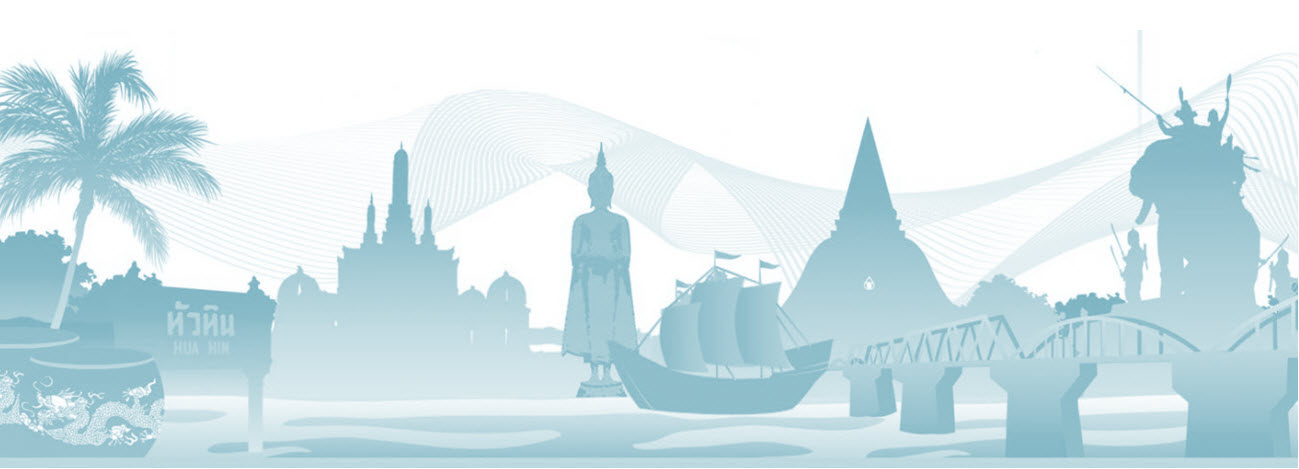คุณภาพชีวิตผู้ป่วยโรคหลอดเลือดสมอง
คำสำคัญ:
คุณภาพชีวิตที่เกี่ยวข้องกับภาวะสุขภาพ, ผู้ป่วยโรคหลอดเลือดสมองที่รอดชีวิตบทคัดย่อ
วัตถุประสงค์: เพื่อศึกษาคุณภาพชีวิตและปัจจัยที่มีอิทธิพลต่อคุณภาพชีวิตของผู้ป่วยโรคหลอดเลือดสมองที่รอดชีวิตอยู่จนถึง 3 เดือนหลังจากป่วย
วิธีการศึกษา: เป็นการศึกษาแบบภาคตัดขวางในผู้ป่วยที่มีชีวิตอยู่รอดจนถึง 3 เดือนหลังจากป่วยด้วยโรคหลอดเลือดสมอง ผู้ป่วยในของโรงพยาบาลตราด 201 ราย ได้รับการขึ้นทะเบียนเข้าร่วมเป็นกลุ่มศึกษา เมื่อครบ 3 เดือน ผู้วิจัยจะประเมินคุณภาพชีวิต ความสามารถในการเคลื่อนไหว ภาวะสมองเสื่อม ภาวะซึมเศร้า และความเร็วของการเดินระยะใกล้ ด้วยแบบประเมิน Stroke Specific Scale – 16 (SIS -16), The Stroke Rehabilitation Assessment of Movement (STREAM), Thai Mental Status Examination (TMSE), Patient Health Questionnaire-9 (PHQ-9) ฉบับภาษาไทย และ 10 Meter Walking Test ตามลำดับ สถิติที่ใช้ในการวิเคราะห์ข้อมูล คือ ความถี่ ร้อยละ ค่าเฉลี่ยเลขคณิต ส่วนเบี่ยงเบนมาตรฐาน พิสัย และ multivariable logistic regression test
ผลการศึกษา: อายุเฉลี่ยของผู้ป่วย คือ 64.8±12.0 ปี เป็นเพศชาย ร้อยละ 57.7 ส่วนใหญ่เป็นโรคหลอดเลือดสมองระดับเล็กน้อยถึงปานกลาง ร้อยละ 85.1 พยาธิสภาพเป็น cerebral infarction ร้อยละ 83.1 เป็นโรคความดันโลหิตสูง ร้อยละ 73.6 เบาหวาน ร้อยละ 25.9 และสูบบุหรี่ ร้อยละ 28.4 คะแนนคุณภาพชีวิต (SIS -16) เฉลี่ย 61.2±31.4 คุณภาพชีวิตในระดับดีสามารถดำรงชีวิตได้อย่างอิสระ (independent living :SIS-16 ≥ 75) ร้อยละ 42.3 มีภาวะสมองเสื่อม (TMSE ≥ 23) ร้อยละ 52.2 มีภาวะซึมเศร้า ร้อยละ 42.8 ไม่สามารถเดินได้ ร้อยละ 17.4 multivariable logistic regression test ชี้ปัจจัยที่มีผลต่อการเกิดคุณภาพชีวิตที่ไม่ดี (poor outcome:SIS-16<75) อย่างมีนัยสำคัญทางสถิติ คือ อายุ คะแนน NIHSS-T แรกรับ คะแนน STREAM โดยมีค่า adjusted odds ratio 1.087, 1.373, 0.871 ตามลำดับ (p<0.05)
สรุป: อายุ ความรุนแรงของโรค และความสามารถในการเคลื่อนไหวของร่างกายเป็นปัจจัยที่มีอิทธิพลต่อการเกิดคุณภาพชีวิตที่ไม่ดี ในผู้ป่วยโรคหลอดเลือดสมองที่รอดชีวิตอยู่จนถึง 3 เดือน หลังจากป่วย
เอกสารอ้างอิง
2. International Health Policy Development Agency. Report of Burden of Disease and Injury in Thai Population 2014 [Internet]. 2017 [Cited 2018 Oct 16]. Available from: URL: http://bodthai.net/download/รายงานภาระโรคและการบาด/
3. Hanchaiphiboolkul S, Poungvarin N, Nidhinandana S, et al. Prevalence of stroke and stroke risk factors in Thailand: Thai Epidemiologic Stroke (TES) study. J Med Assoc Thai 2011;94:427-36.
4. Dobkin BH. Strategies for stroke rehabilitation. Lancet Neurol 2004;3:528-36.
5. Asplund K, Stegmayr B, Peltonen M. From the twentieth to the twenty-first century : a public health perspective on stroke. In: Ginsberg MD, Bogousslavsky J, editor. Cerebrovascular Disease. Pathophysiology, Diagnosis, and Management. Malden: Blackwell Science, 1998.
6. Rosamond W, Flegal K, Furie K, et al. Heart Disease and Stroke Statistics-2008 Update: a report from the American Heart Association Statistics Committee. Circulation 2008;117:e25-146.
7. van der Cruyssen K, Vereeck L, Saeys W, et al. Prognostic factors for discharge destination after acute stroke: a comprehensive literature review. Disabil Rehabil 2015;37:1214-27.
8. Hendricks HT, van Limbeek J, Geurts AC, et al. Motor recovery after stroke: a systematic review of the literature. Arch Phys Med Rehabil 2002;83:1629-37.
9. Lai MS, Studenski S, Duncan PW, et al. Persisting consequences of stroke measured by the stroke impact scale. Stroke 2002;33:1840-4.
10. Stroke--1989. Recommendations on stroke prevention, diagnosis and therapy. Report of the WHO Task Force on Stroke and other Cerebrovascular Disorders. Stroke 1989;20:1407-31.
11. Saebo. What is The NIH Stroke Scale (NIHSS)? [Internet]. 2017 [Cited2018 Oct 28]. Available from: URL: https://www.saebo.com/nih-stroke-scale-nihss/
12. Kinney CL, Eikenberry MC, Noll SF, et al. Standardization of interdisciplinary clinical practice and assessment in stroke rehabilitation. Int J Phys Med Rehabil 2013;1:166-72.
13. Dobkin BH. Rehabilitation after Stroke. N Engl J Med 2005;352:1677-84.
14. Perry J, Garrett M, Gronley JK, et al. Classification of walking handicap in the stroke population. Stroke 1995;26:982-9.
15. Chulalongkorn University, Faculty of Medicine, Department of Psychiatry. Thai Mental Status Examination (TMSE) [Internet]. 2011 [Cited 2018 Nov 4]. Available from: URL: http://www.cumentalhealth.com/index.php?lay=show&ac=article&Id=539909338
16. Ministry of Public Health, Department of Mental Health. Clinical practice guidelines for psychosocial treatment of depressive patients for psychiatric nurses in tertiary care facilities [Internet]. 2011 Jun [Cited 2018 Nov 10]. Available from: URL: www.thaidepression.com/www/58/cnpgtertiarycare
17. Duncan PW, Bode RK, Min Lai S, et al. Rasch analysis of a new stroke-specific outcome scale: the Stroke Impact Scale. Arch Phys Med Rehab 2003;84:950-63.
18. Carod - Artal FJ, Ferreira CL, Stieven TD, et al. Self- and proxy- report agreement on the Stroke Impact Scale. Stroke 2009;40:3308-14.
19. Carod - Artal FJ. Determining quality of life in stroke survivors. Expert Rev Pharmacoecon Outcomes Res 2012;12:199-211.
20. Gurcay E, Bal A, Cakei A. Health related quality of life in first- ever stroke patients. Ann Saudi Med 2009;29:36-40.
ดาวน์โหลด
เผยแพร่แล้ว
รูปแบบการอ้างอิง
ฉบับ
ประเภทบทความ
สัญญาอนุญาต
ลิขสิทธิ์บทความเป็นของผู้เขียนบทความ แต่หากผลงานของท่านได้รับการพิจารณาตีพิมพ์ลงวารสารแพทย์เขต 4-5 จะคงไว้ซึ่งสิทธิ์ในการตีพิมพ์ครั้งแรกด้วยเหตุที่บทความจะปรากฎในวารสารที่เข้าถึงได้ จึงอนุญาตให้นำบทความในวารสารไปใช้ประโยชน์ได้ในเชิงวิชาการโดยจำเป็นต้องมีการอ้างอิงถึงชื่อวารสารอย่างถูกต้อง แต่ไม่อนุญาตให้นำไปใช้ในเชิงพาณิชย์




